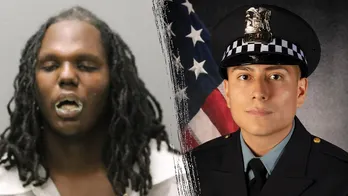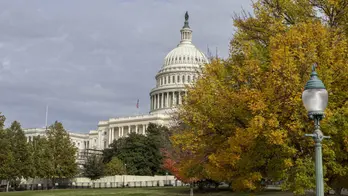The 'mob wife' aesthetic is in. But what about the vintage fur that comes with it?
When 28-year-old Kayla Trivieri posted a TikTok in early January, she didn't expect to start a movement.
"Clean girl is out, mob wife era is in ... we're wearing vintage furs all winter," she said in her voiceover. "We're already seeing the cheetah prints, the sparkle, the glitz, the glam, the fur, the big hair," she continued over photos of Adriana La Cerva and Carmela Soprano, characters from HBO's The Sopranos.
Trivieri had older Italian women (including her grandmother) in mind when she made the video. But the "mob wife aesthetic" also refers to the glamorous and ostentatious style of female characters in popular mafia movies and TV shows. The look is characterized by form-fitting dresses, leather, fur coats, big sunglasses and flashy gold jewelry.
Trivieri's 26-second video, filmed in her New York City apartment, now has 1.7 million views. Her audio has been used in more than 2,200 other videos at the time of publishing. The trend skyrocketed in Google searches, appearing across social media and in magazines, going viral within days.
Some believe the trend appropriates Italian culture or glorifies the criminal lifestyle of the mafia. But others have a problem with the outfits themselves — specifically those vintage furs Trivieri mentioned in her TikTok.
Wearing vintage fur has been a controversial topic for decades. The consensus among the public, policy makers and even many major fashion houses seems to be that new fur is unethical and a line many won't cross. But that line gets blurry for vintage.
A rising demand for vintage
Interest in vintage fur has nearly doubled compared to December 2020, according to data from Google Trends. Meanwhile, the Google search cycle for "fur coat" has remained pretty consistent for the last three years. So why are more people turning to vintage?
"Vintage fur is the best of both worlds," Gilda Chestney, 23, said in a message to NPR. "Because it allows me to wear a beautiful coat that will keep me warm and last a lifetime without supporting industries that pollute or contribute to animal cruelty."
Chestney's passion for sustainability is why she buys vintage fur, she said. It's also why she's not as interested in faux fur.
"Faux fur has almost none of the benefits of real fur. It's made of plastic, so it doesn't biodegrade, and it doesn't last nearly as long or wear as well as real fur," the Atlanta-based actor explained.
Johnny Valencia, 35, is the owner of Pechuga Vintage, a Latino-operated store based in Los Angeles that specializes in vintage and archival lines, and counts celebrities like Kim Kardashian, Lori Harvey and Grimes among its customers.
Valencia said he recently tried on a Dolce & Gabbana faux fur coat.
"And it was gross. It's plastic on your body," Valencia told NPR. "Like, really? You – you want me to pay $4,000 for plastic?"
Valencia sells vintage fur pieces that can reach up to $18,000. That kind of investment, he feels, ensures the item is going to someone who appreciates it, can pay for its maintenance and has places to wear it. The animal's life is gone, he added. Giving a fur piece a second life helps him feel that it wasn't a waste.
There are some furs he won't go near, particularly endangered cats like jaguars, which are sacred in Latin America. He once dealt a monkey fur coat and the backlash was enough to turn him off exotic furs. He occasionally receives negative comments online for selling fur, but doesn't get involved.
Not everyone agrees that vintage fur is an ethical practice. PJ Smith, the director of fashion policy for The Humane Society, said that even wearing vintage fur can have harmful consequences: it implies that it is acceptable to wear fur, which normalizes the cruel and unnecessary practice in society.
"It's nearly impossible to know if that fur is used or not," he told NPR. "And that could lead to more animals being killed for the fur trade, because that could lead to further sales."
This was a hesitation artist and vintage fashion enthusiast Tina Lynn had when she started wearing vintage fur.
"The biggest fear, and I stopped wearing [my furs] for a while, is that it will inspire more and continued fur manufacturers and cruelty to animals," she told NPR. "I think we should question everything we wear and use and its ethics."
In the end, Lynn feels that her fur looks distinctly vintage. "I think anything secondhand is preferable to anything new. I want to use up what's already here until it's threadbare," she explained.
Plant-based faux furs are hitting the market
California banned the sale of new fur in 2019, and the law went into effect Jan. 1, 2023. The state was responsible for around 25% of all fur sales in the U.S., according to The Humane Society.
Inventors, innovators and entrepreneurs have descended on the disrupted industry. BioFluff, for example, is a new plant-based fur that fashion brand Stella McCartney is using.
"It got so much investment because they realize that there is this gap in the market," explained Smith. "Faux fur is getting better and better in quality and environmental impact."
BioFluff is a startup that specializes in processing nettle, hemp and flax into convincing faux fur. Other brands, like Apparis, are reducing the environmental impact of vegan fur by using plant-based fiber and recycled polyester.
Beyond potential ripple effects caused by wearing vintage fur, people should also consider whether the skin of an animal slaughtered for fashion is something they want to wear, Emma Håkansson of Collective Fashion Justice said in an email to NPR.
The founder of the Australia-based charity inherited two furs when her grandmother died.
"I wore them as an older teenager, aware that animals died for them but not with any specificity, and without consideration of what my wearing them said to the world — about fur-wearing, and about me," she said. When she started researching the practice, she said she donated them to an organization that redistributes fur to animal sanctuaries.
"I now have photos of these coats being used as bedding by native animals like orphaned kangaroo joeys," Håkansson said. "These animals need a familiar, furry comfort, and they can get that from these coats — from animals who had no comfort in their shortened lives. I see it as a kind of balancing act."
Mitigating the negative effect of trends
Valencia questions how much the mob wife aesthetic is actually influencing purchasing habits.
"We're living in a time where micro trends are popping up every other day," he said. "But how many? How many of these, like, 'mob wives' are we seeing out and about?"
Still, policy changes can prevent even one sale of a new fur item inspired by the mob wife aesthetic, according to Smith. He said they ensure that short-lived trends don't have harmful consequences to animals and the environment
Trivieri also encourages the public to use discretion as TikTok and social media pump out trends, including her own.
"We don't have to participate in every trend. Just remind yourself of that," she said. "Personal fashion and fashion is supposed to be fun. It's supposed to be a reflection of you and your identity, and whatever feels good."
Disclaimer: The copyright of this article belongs to the original author. Reposting this article is solely for the purpose of information dissemination and does not constitute any investment advice. If there is any infringement, please contact us immediately. We will make corrections or deletions as necessary. Thank you.







